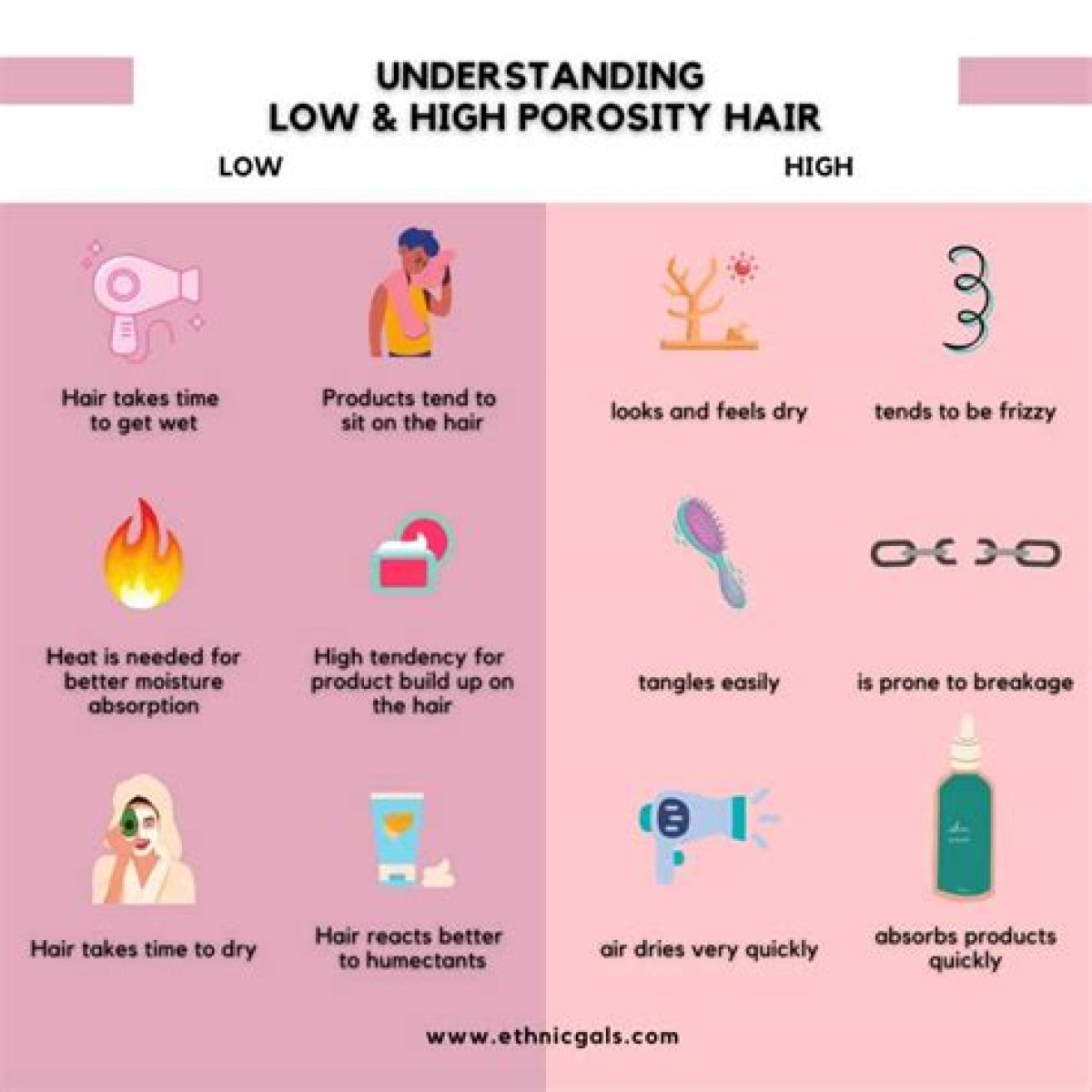When it comes to hair care, understanding the porosity of your hair can significantly impact how you treat and maintain it. High porosity hair and low porosity hair are two ends of the spectrum that affect moisture retention, product absorption, and overall health. Knowing where your hair stands on this scale can help you choose the right products and techniques for your unique hair type. High porosity hair typically has gaps and holes in the cuticle layer, making it more susceptible to moisture but also more prone to damage. On the other hand, low porosity hair has a compact cuticle layer, making it resistant to moisture but often resulting in product buildup. This article will delve into the key differences between high porosity hair and low porosity hair and help you understand which category your hair falls into.
Understanding the characteristics of your hair's porosity is essential for selecting the right hair care products and developing an effective routine. High porosity hair may require heavier creams and oils to lock in moisture, while low porosity hair often benefits from lighter products that can penetrate the cuticle. By exploring the intricacies of high porosity hair versus low porosity hair, you can ensure that your hair remains healthy and vibrant.
In this article, we will address some common questions related to high porosity hair and low porosity hair, helping you make informed decisions about your hair care routine. From identifying your hair type to exploring the best products and techniques for your unique needs, we aim to provide valuable insights into the world of hair porosity.
What is High Porosity Hair?
High porosity hair is characterized by an open cuticle layer that allows moisture to enter and escape easily. This type of hair often absorbs products quickly but has difficulty retaining moisture, leading to dryness and frizz. People with high porosity hair may notice that their hair feels dry even after applying leave-in conditioners or oils. Here are some common traits of high porosity hair:
- Absorbs moisture quickly but loses it just as fast.
- Prone to frizz and breakage.
- Can feel rough or straw-like to the touch.
- Styles may not hold as well due to moisture loss.
What is Low Porosity Hair?
Low porosity hair has a tightly packed cuticle layer that makes it resistant to moisture absorption. While this can help retain moisture, it can also lead to product buildup, as products sit on top of the hair rather than penetrating it. Here are some characteristics of low porosity hair:
- Resistant to moisture absorption.
- Can feel greasy or weighed down by product buildup.
- Styles may hold better compared to high porosity hair.
- Often requires heat or specific techniques to help products penetrate.
How Can You Determine Your Hair Porosity?
Determining whether you have high or low porosity hair can be done with a simple test. Here’s how:
- Take a clean strand of hair and place it in a glass of water.
- Observe what happens within a few minutes:
- If the hair sinks quickly, it likely has high porosity.
- If the hair floats for a long time, it likely has low porosity.
What Are the Best Products for High Porosity Hair vs Low Porosity Hair?
Choosing the right products based on your hair porosity is crucial for maintaining healthy hair. Here’s a breakdown:
- For High Porosity Hair:
- Moisturizing shampoos and conditioners.
- Heavy creams and oils like shea butter or coconut oil.
- Protein treatments to strengthen the hair.
- For Low Porosity Hair:
- Lightweight, water-based products.
- Clarifying shampoos to remove buildup.
- Heat-activated treatments for better absorption.
How Can You Care for High Porosity Hair?
Caring for high porosity hair requires an emphasis on moisture retention. Here are some tips:
- Use a deep conditioning treatment regularly.
- Avoid harsh sulfates that can strip moisture.
- Seal in moisture with heavier oils or creams.
- Protect hair from environmental damage with styles like braids or buns.
How Can You Care for Low Porosity Hair?
Low porosity hair needs a different approach for effective care. Consider the following tips:
- Use heat when applying products to help them penetrate.
- Opt for lightweight conditioners and avoid heavy oils.
- Incorporate clarifying treatments to prevent buildup.
- Limit the use of protein treatments to avoid stiffness.
What Are the Common Misconceptions About Hair Porosity?
There are various misconceptions surrounding hair porosity that can lead to confusion. Some common myths include:
- All hair types can use the same products—this is not true; product choice should depend on porosity.
- High porosity hair is always damaged—while it can be more prone to damage, proper care can maintain its health.
- Low porosity hair doesn’t need moisture—this type still requires moisture but in a different way.
Conclusion: High Porosity Hair vs Low Porosity Hair
Understanding the differences between high porosity hair versus low porosity hair is crucial for maintaining healthy locks. By identifying your hair type, choosing the right products, and implementing effective care strategies, you can achieve the beautiful, healthy hair you desire. Remember, each hair type requires a personalized approach, so take the time to experiment and find what works best for you!
Unveiling The Secret Of Cakes Nipple Covers: Fashion's Hidden GemUnlocking The Power Of Digital Reading: Tools For PDF AccessibilityWhen Lines Are Drawn: Understanding The Phrase "Don't Talk To Me Or My Son Again"
